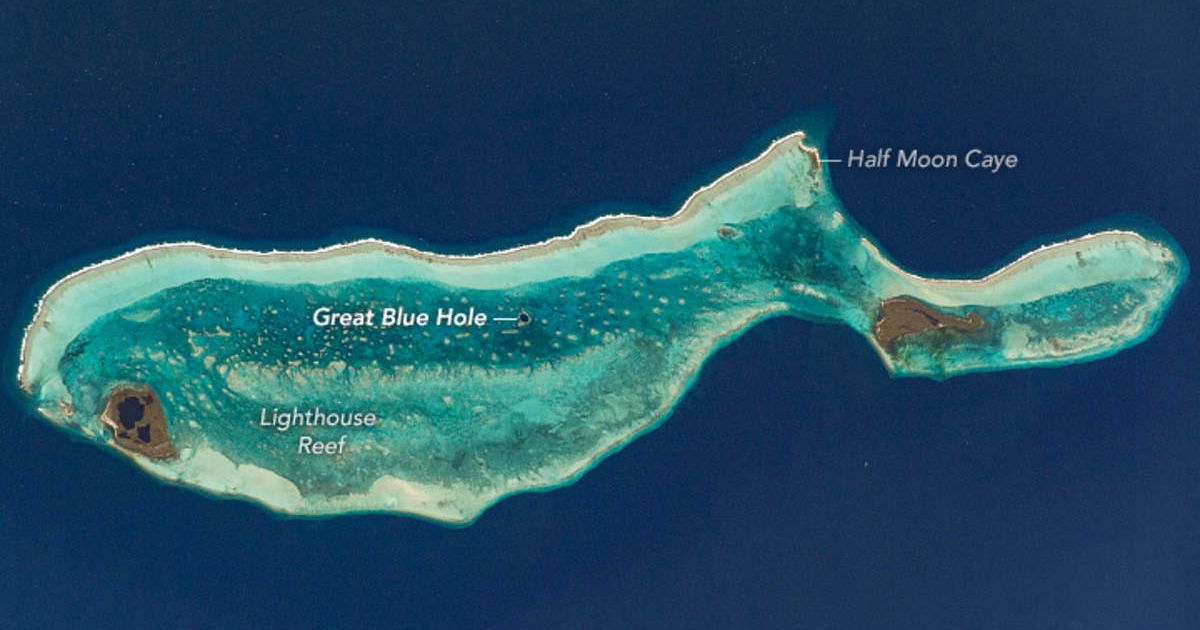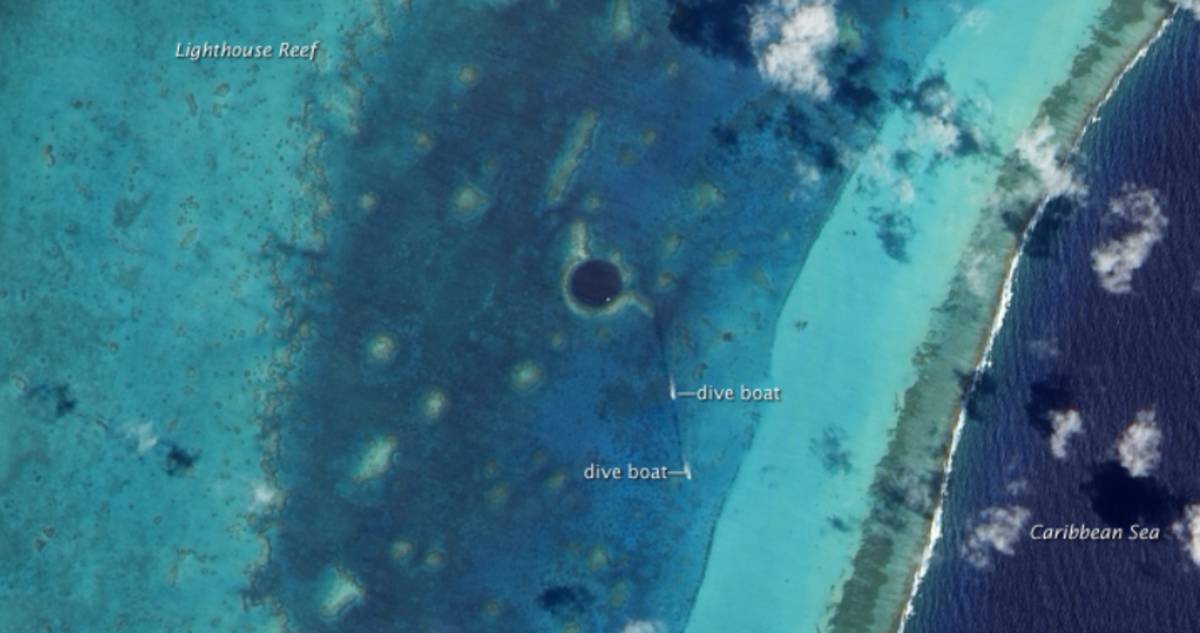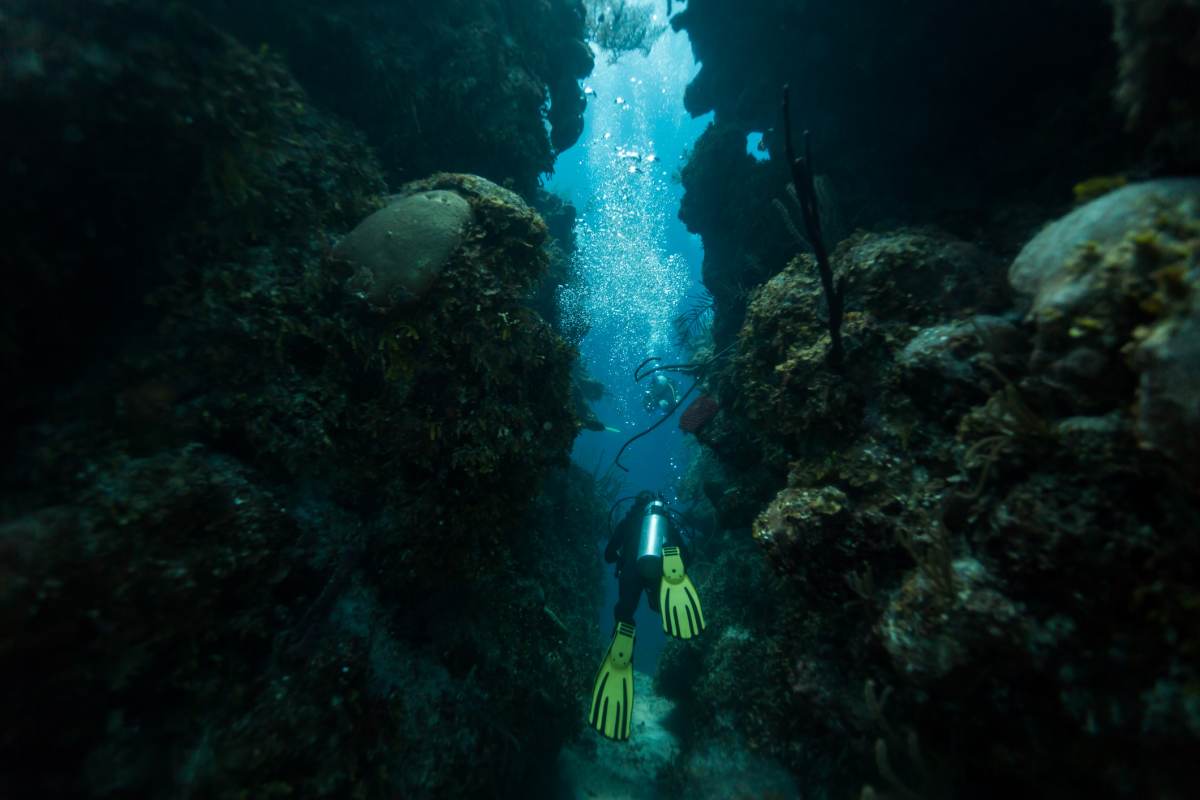NASA Astronauts Capture Whale-Shaped Island in the Caribbean With an Incredible ‘Blowhole’

In the heart of the Caribbean, about 50 miles off Belize’s eastern coast, a surreal zone called the “Lighthouse Reef” brims with colorful fish, squishy glassy sponges, and majestic spotted eagle rays that glide restlessly with their pointed wings. But at a depth of about 400 feet, the waters become eerie. On March 5, 2020, a NASA astronaut from the Expedition 62 crew was orbiting above these waters when their Nikon D5 digital camera caught a whale-like silhouette materializing in the middle of this blue-green piece of Earth.

They were probably gazing with startled eyes when the 380-millimeter lens of the camera revealed to them this silhouette, which resembled a gigantic whale staring at them with a round blue eye, as noticed in the image shared by NASA Earth Observatory and also one by ESA. What appeared to be a giant whale’s blowhole from space actually turned out to be “one of the deepest sinkholes on the planet,” nicknamed the “Great Blue Hole” of Belize. Riddled in the center of the Belize Barrier Reef, the blue hole measures 1,000 feet across and over 400 feet in depth.
The Great Blue Hole—a flooded sinkhole—lies near the center of Lighthouse Reef atoll, about 80 kilometers (50 miles) from the coast of mainland Belize. https://t.co/0rT9htl8ez pic.twitter.com/Z9iDqE5HKg
— NASA Earth (@NASAEarth) August 23, 2020
While the whale’s body is mostly an atoll, shallow coral reefs and sandy patches known as cays are found. Lighthouse Reef, in itself, is not too deep. Throngs of divers who usually travel to this region jump out after exploring these waters. On the other hand, the sinkhole is a deep-seated cavern system carved during the last Ice Age around 14,000 years ago. At that time, it was just a dry cave. But then, the ice began to melt. Sea levels rose and flooded the cave. The walls collapsed. The precipice dropped, and as it did, it left clusters of stalactites and stalagmites, some of which can be observed even today, as they branch off from the hole’s steep walls.

The gaping hole first came to attention in the 1970s when the famous ocean explorer Jacques Cousteau visited the island in his ship named Calypso and declared this sinkhole a “top scuba diving site.” Another episode that made the hole a famous diving destination was a 2018 expedition conducted by billionaire Richard Branson and Fabien Cousteau, the explorer’s grandson, in partnership with National Geographic and Aquatica Submarines. The objective of this expedition was to create a 3D map of the hole as well as a mini-documentary. As Branson and his team ventured into the depths, they reported a striking realization, as shared by Insider Science.

At a depth of about 290 feet, the hole seemed to be blanketed by a layer of toxic hydrogen sulfide. Astonishingly, there was no life beneath this layer as the toxic chemical stole away all the oxygen for itself. Even till today, anything that falls there gets entombed for what may look like eternity. Beyond this layer, life just gets shut out by the thick chemical blanket, as one researcher described to Newsweek. During this expedition, however, the team dared enough to reach the bottom of the hole, where they uncovered two GoPro cameras, a 2-year-old Coke bottle, conchs, and, not to forget, two dead bodies belonging to earlier divers who likely died due to the lack of oxygen. They left the dead bodies undisturbed, out of respect. “They are at peace.”
More on Green Matters
Researchers Send Underwater Drone Deep Into the Great Blue Hole — A Major Surprise Awaited Them
Google Maps Showed a Mysterious Black Hole in the Pacific Ocean — Then People Realized What It Was
Researchers Finally Solve the Mystery Behind the Ghostly Mitten-Shaped Structure on Greenland Ice